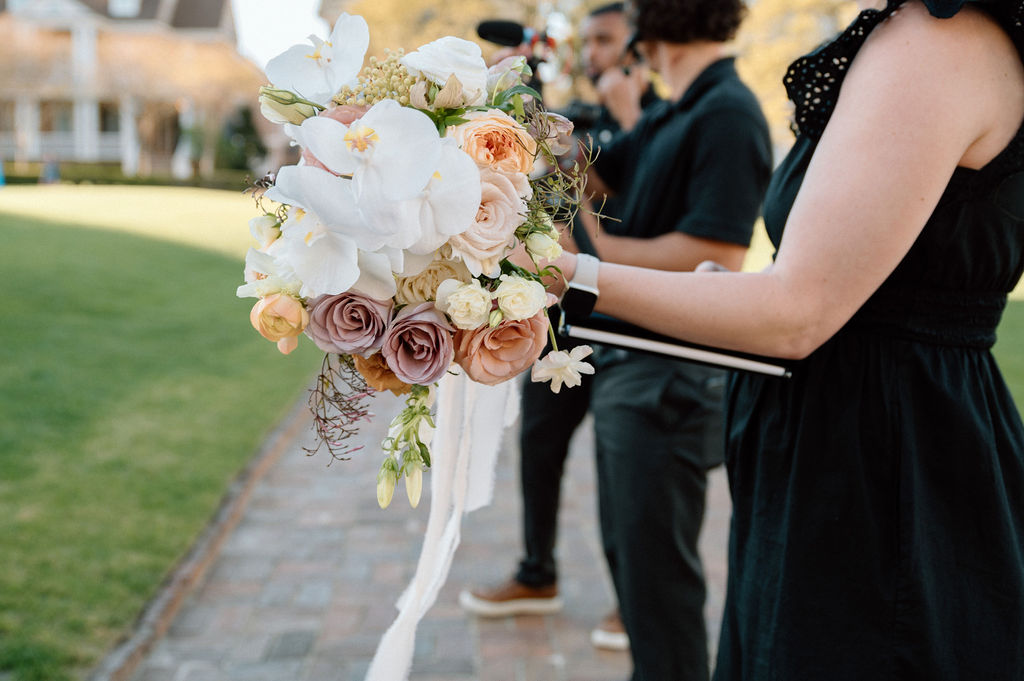What goes on your base wedding day timeline?

A wedding day timeline is the backbone to all wedding planning and day of execution success, and it starts right at the beginning of your wedding planning process.
Let’s break down all the core components of a base timeline, how we then use our concrete times to build up to and down from in order to fill in the “meat” of a wedding days events in a way that allows our couples to feel like they are naturally flowing through their day vs feeling like they are being jerked around and produced.
What are the core components?
Every wedding has what we consider to be a core component. These are elements that once decided, don’t or can’t change. Sometimes it’s venue policy, sometimes changing them requires contract renogiation and additional fees. So what are they?
- Ceremony start time – the mother of all things core components. It’s the moment everyone is gathering for and the whole reason you’re hosting such an intricate and large event. This time becomes what just about everything builds up to and down from.
- Venue access time – sometimes this may even be two times. One for vendors and one for you and your bridal party. It’s EXTREMELY important to understand when these times are as they will have a direct impact on where and when pre ceremony elements will take place.
- Cocktail hour start time – the least concrete in my opinion, but still important. Most venue contracts will have this time set for 30 minutes post ceremony. Depending on where and how long our ceremony will be, this time may need to adjust early on but won’t come with any contract negotiations or additional fees (typically).
- Reception start time – Typically one hour after your cocktail hour start time but can be cut short or extended based on surrounding parameters like flipping spaces and buffer time for guest movement.
- Reception end time/Venue rental end time – this is another critical time. When your reception ends and when all the breakdown needs to be completed by are often hard lines in the concrete. Extending often comes with additional fees and must be negotiated with your venue well in advance of wedding day.
We keep these concrete elements in bold on our master timelines because they dictate EVERY other event/moment that will make its place on the timeline and also give us an idea of what is and is not possible.
Most importantly, when we have this timeline in our back pocket it allows us to build our vendor team more strategically because we know where our hard lines are. To use photography as an example. If we know your reception ends at 11:00 pm with a stunning grand exit, and you also fully intend to have some getting ready photos prior to you and your bridesmaids getting dressed, factoring in your ceremony start time and working back some, you will easily find that you will need a photographer for at least 10 hours of coverage vs the standard of 8. This allows you to book AND budget accordingly from the beginning because you’re looking at the correct pricing tier from the beginning vs finding you underbooked and need to add additional time later on (which likely adds to the budget when not expected).
Just as much as your guest list impacts the price of your entire vendor team, your time impacts the service levels and pricing needed to produce the day itself.
Even at our base service level we make sure to build a couples base timeline and walk them through how to book and secure proper vendor coverage based on their specific wedding and venue needs.
If you are reading this and are feeling a little overwhelmed as you look to build your own wedding day timeline, we are always here for you if you need us!
Cheers and happy planning!